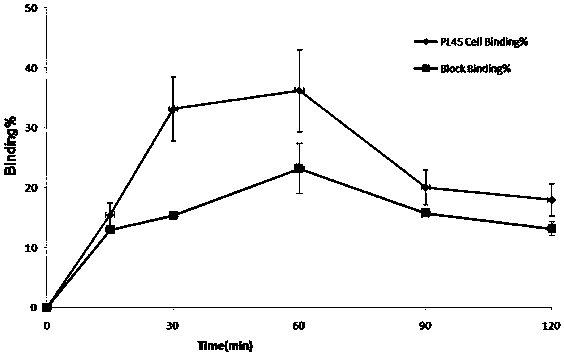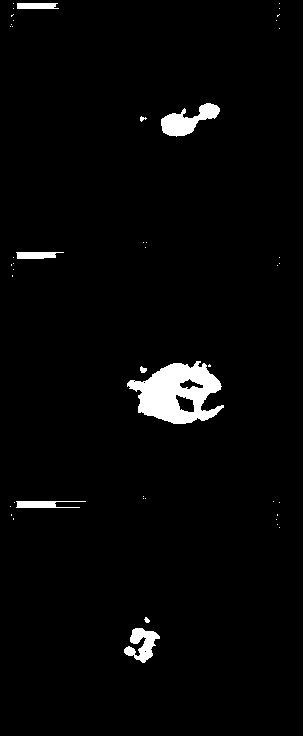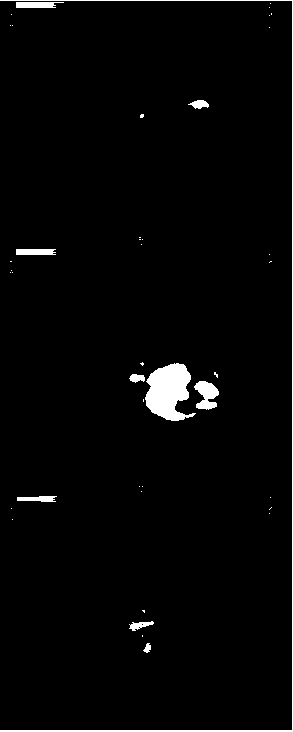Preparation method of Cu-64 labeled Dimer-San A cyclic peptide derivative pancreatic cancer molecular probe
A technology of molecular probes and derivatives, applied in peptides, drug combinations, digestive system, etc., can solve the problems of misdiagnosis and missed diagnosis of benign and malignant tumors, obvious differences in anti-tumor activity, etc., and achieve simple labeling methods and good imaging effects , High stability effect
- Summary
- Abstract
- Description
- Claims
- Application Information
AI Technical Summary
Problems solved by technology
Method used
Image
Examples
Embodiment 1
[0052] Example 1 The preparation method of Cu-64-labeled Dimer-San A cyclic peptide derivative pancreatic cancer molecular probe comprises the following steps:
[0053] (1) Dissolve NOTA-Dimer-Sansalvamide A in acetonitrile to prepare a peptide solution with a concentration of 1 μg / μL.
[0054] ⑵ at 37 MBq 64 CuCl 2 Add 300 μL of 0.1 M ammonium acetate (NH 4 OAc) buffer to react to obtain the reaction solution 64 Cu(OAc) 2 .
[0055] (3) Add 5 μg of peptide solution to the reaction solution 64 Cu(OAc) 2 , heated at 45°C for 45 min, and kept shaking during the heating process to obtain the product 64 Cu-NOTA-Dimer-Sansalvamide A, referred to as 64 Cu-NOTA-Dimer-San. After HPLC (high performance liquid chromatography) analysis and separation and purification, the labeling rate is >97%, and its structural formula is as follows:
[0056] .
[0057] ⑷ product 64 Cu-NOTA-Dimer-San was removed with a suspension dryer at 40°C, dissolved in phosphate buffered saline (PBS)...
Embodiment 2
[0059] Example 2 The preparation method of Cu-64-labeled Dimer-San A cyclic peptide derivative pancreatic cancer molecular probe comprises the following steps:
[0060] (1) Dissolve NOTA-Dimer-Sansalvamide A in acetonitrile to prepare a peptide solution with a concentration of 1 μg / μL.
[0061] ⑵ at 111 MBq 64 CuCl 2 Add 300 μL of 0.1 M ammonium acetate (NH 4 OAc) buffer to react to obtain the reaction solution 64 Cu(OAc) 2 .
[0062] (3) Add 10 μg of peptide solution to the reaction solution 64 Cu(OAc) 2 , heated at 45°C for 45 min, and kept shaking during the heating process to obtain the product 64 Cu-NOTA-Dimer-Sansalvamide A, referred to as 64 Cu-NOTA-Dimer-San. After HPLC (high performance liquid chromatography) analysis and separation and purification, the labeling rate was >97%, and its structural formula was the same as in Example 1.
[0063] ⑷ product 64Cu-NOTA-Dimer-San was removed with a suspension dryer at 40°C, dissolved in phosphate buffered saline (P...
Embodiment 3
[0065] Example 3 The preparation method of Cu-64-labeled Dimer-San A cyclic peptide derivative pancreatic cancer molecular probe includes the following steps:
[0066] (1) Dissolve NOTA-Dimer-Sansalvamide A in acetonitrile to prepare a peptide solution with a concentration of 1 μg / μL.
[0067] ⑵ at 74 MBq 64 CuCl 2 Add 300 μL of 0.1 M ammonium acetate (NH 4 OAc) buffer to react to obtain the reaction solution 64 Cu(OAc) 2 .
[0068] (3) Add 8 μg of peptide solution to the reaction solution 64 Cu(OAc) 2 , heated at 45°C for 45 min, and kept shaking during the heating process to obtain the product 64 Cu-NOTA-Dimer-Sansalvamide A, referred to as 64 Cu-NOTA-Dimer-San. After HPLC (high performance liquid chromatography) analysis and separation and purification, the labeling rate was >97%, and its structural formula was the same as in Example 1.
[0069] ⑷ product 64 Cu-NOTA-Dimer-San was removed with a suspension dryer at 40°C, dissolved in phosphate buffered saline (PBS...
PUM
| Property | Measurement | Unit |
|---|---|---|
| molecular weight | aaaaa | aaaaa |
Abstract
Description
Claims
Application Information
 Login to View More
Login to View More - R&D
- Intellectual Property
- Life Sciences
- Materials
- Tech Scout
- Unparalleled Data Quality
- Higher Quality Content
- 60% Fewer Hallucinations
Browse by: Latest US Patents, China's latest patents, Technical Efficacy Thesaurus, Application Domain, Technology Topic, Popular Technical Reports.
© 2025 PatSnap. All rights reserved.Legal|Privacy policy|Modern Slavery Act Transparency Statement|Sitemap|About US| Contact US: help@patsnap.com



